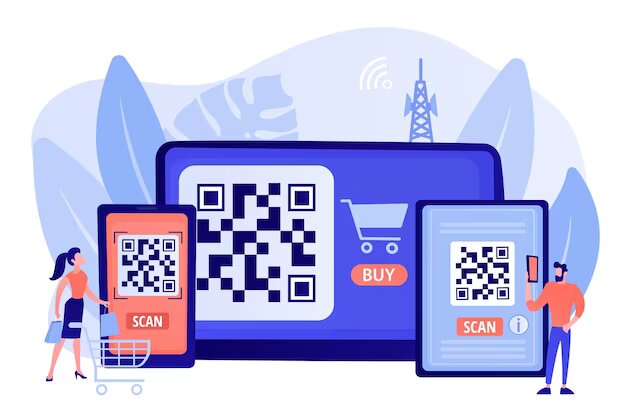
Yesterday, I went to the grocery store situated in our neighborhood with a friend. We bought what we had to get and went to the billing counter.
And that’s where my friend found something new, something that he has never seen before.
Pardon his tech knowledge, but what he was looking at – was a simple QR code. However, for some reason, he considered it as a barcode and was blabbing about something unrelated.
So, before he went too far, I had to tell him that it was a QR code and not a barcode. It didn’t work as he thought it did. So, then, I had to explain their differences too…
Wait, if you’re here, you probably are a little confused about how a QR code is different from a barcode too, right? Well, don’t worry, let me help you with it.
Wait, What Is A QR Code?
A QR (quick response) code, in essence, is somewhat similar to a barcode.
In fact, both of these are almost the same thing. For example, a QR code can also be read by a scanner. Also, the information available here is machine-readable as well.
A recent QR code study revealed that the percentage of QR code scans has increased by 26% in the last two years. Nonetheless, unlike a normal QR code, a barcode will contain information in both the vertical and the horizontal direction. And trust me, that’s not the only difference between them.
A QR code can also contain a massive amount of information. From grocery stores to large companies – almost everyone can create a QR code and attach it to their offering.
Then What The HECK Is A Barcode?
If you have ever bought something from a store, you’ve probably seen a barcode already. It’s the minute box printed on the backside of a product’s packaging. You can see a collection of black parallel lines of different widths (but of the same size) on it too.
However, that’s what the layman’s definition of a barcode is.
Technically speaking, it is a visual representation of machine-readable data about the product it’s attached to. So, if you scan it, you can get a piece of elaborate information about the item, like:
- The name of the manufacturer
- The MRP of the product
- The manufacturing and the expiry date of the item, etc.
A barcode reader might only read all of this information and will consist of data in a horizontal direction. Due to the design, it’s also known as 1D-1-dimensional.
The Differences Between A QR Code And A Barcode
Practically speaking, there are several differences available between a barcode and a QR code. Here is everything you need to know about them.
- When it comes to appearance, a QR code tends to be vastly different than a barcode. If I’m talking about the outlook, the former has a square shape and a complicated design. However, the latter comes with a rectangular shape. Besides, it has a design consisting of horizontal lines of various shapes.
- A barcode is a one-dimensional code and, therefore, may only contain a small amount of information. That’s why its design tends to be quite simplistic and uncomplicated. It is also called a one-dimensional code for that reason. However, a QR code can have a lot of information stacked in it, as the data is stored on both vertical and horizontal sides.
- The error rate of a QR code (7% to 30%) is much, much less than a barcode. So, even if the packaging of a product is messed up, you can still use the code. However, I can’t say the same thing for a barcode as well, as it’s more fragile in this aspect.
Moreover, the use case of a barcode is mostly limited to tracking records and stuff. But, a QR code can be used to transfer a video, photo, or contacts. If possible, you can also use it to pay someone or in the grocery store after you have bought something from there.
So, in a way, it’s much superior to its brethren.
Conclusion
QR codes, albeit superior to some extent, tend to be quite problematic when it comes to security. So, if you want to get away from the common QR code scams, be sure to follow the safety guide. Hopefully, it’d help you out.






